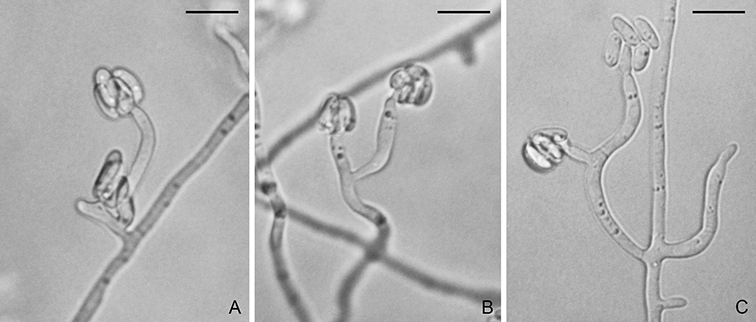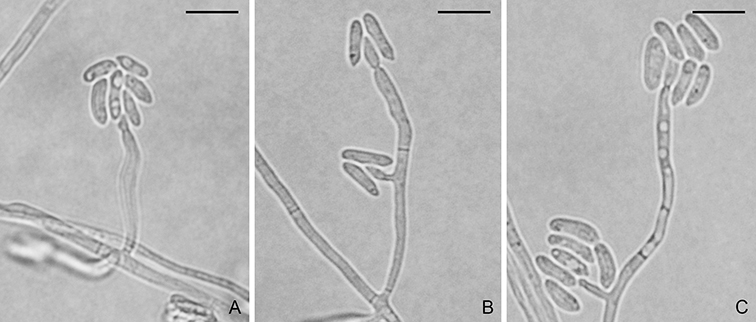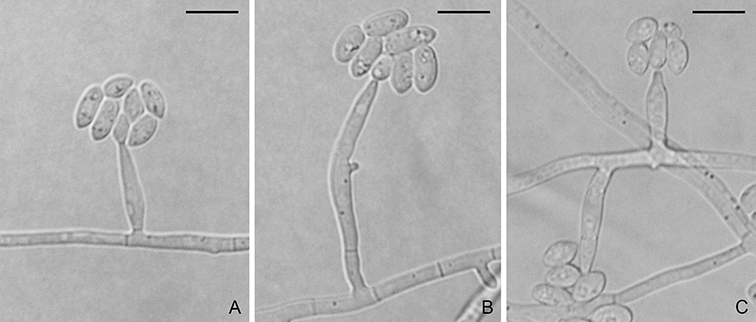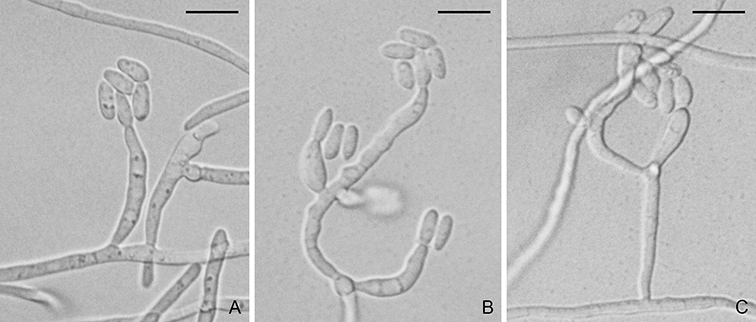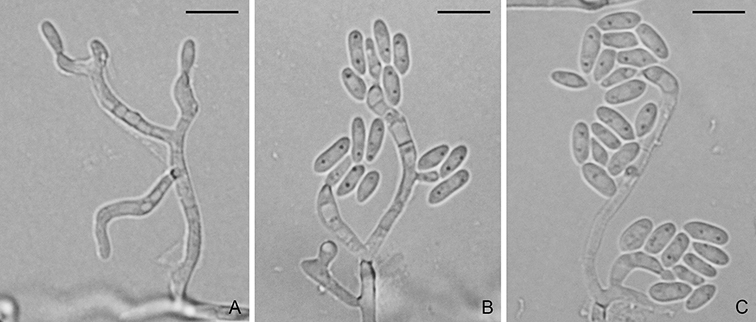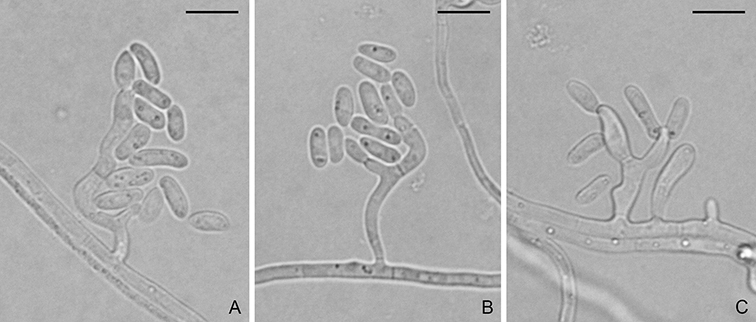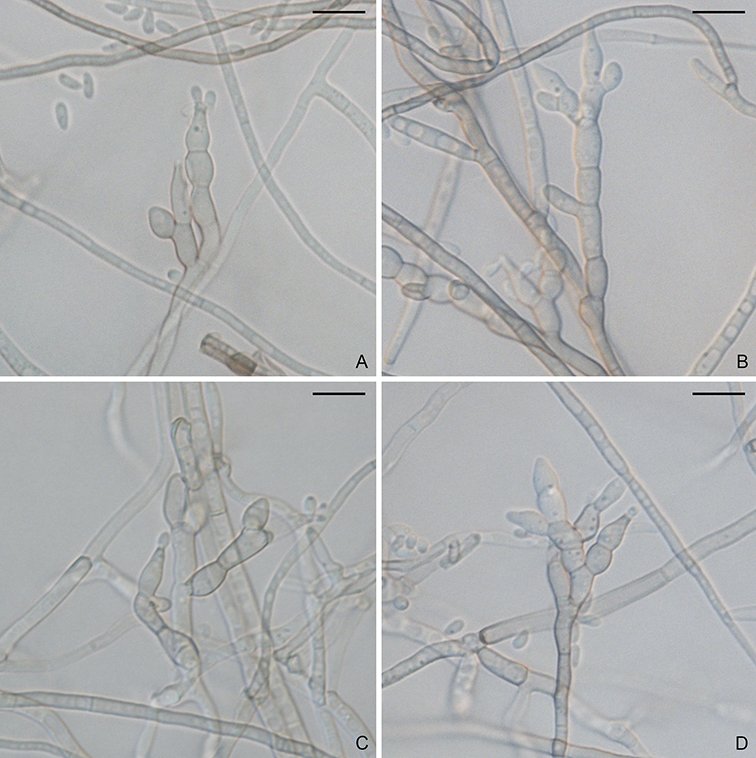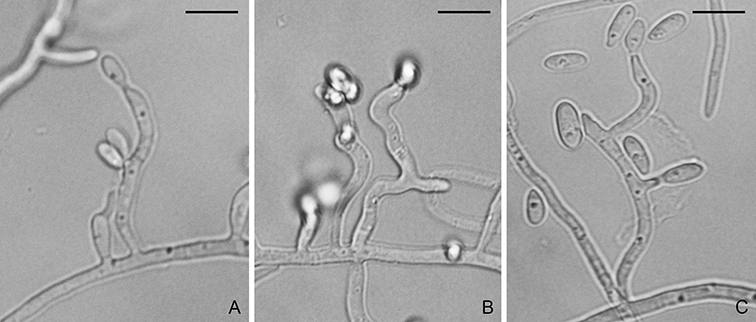
Figure. Pseudophialophora magnispora (CM14RG38). A–C. Conidiophores and conidia. Scale bars: A–C = 10 µm.
Pseudophialophora magnispora J. Luo & N. Zhang.
MycoBank: MB811709.
Asexual state phialophora-like. On CMA, hyphae branched, septate, hyaline to yellowish, smooth. Conidiophores micronematous, single or branched. Conidiogenous cells phialidic, curved, hyaline to yellowish, 13–30 × 2.5–4 µm. Conidia aggregated in slimy heads, ellipsoidal, straight or slightly curved, aseptate, hyaline, smooth, 8–12 × 3–5 µm. Sexual state unknown.
Colonies on PDA 2.6 cm diam after 7 days at 25 °C in dark; surface velvety to floccose, yellow green; aerial mycelium yellowish; reverse peacock green. Colonies on CMA 2.4 cm after 7 days at 25 °C in dark; surface light green-yellow; aerial mycelium sparse; reverse pale green-yellow (Description from Luo et al., 2015b).
Typification: Holotype RUTPPCM14RG38. Ex-holotype culture CM14RG38.
Gene sequences: KP769819 (18S), KP769835 (ITS), KP769827 (28S), KP784810 (MCM7), KP784818 (RPB1), KP784826 (TEF1).
Specimens examined: USA, New Jersey, Colliers Mills, N40 04.093, W74 26.598, alt. 42 m, from roots of Dichanthelium acuminatum, 4 Jun. 2014, J. Luo and N. Zhang, CM14RG38 (RUTPPCM14RG38), CM14RG50.
Hosts/substrates: From roots of Dichanthelium acuminatum (Poaceae).
Distribution: USA (New Jersey).
Copyright 2022 by The American Phytopathological Society. Reproduced, by permission, from Luo, J., and Zhang, N. 2022. The Rice Blast Fungus and Allied Species: A Monograph of the Fungal Order Magnaporthales (https://my.apsnet.org/APSStore/Product-Detail.aspx?WebsiteKey=2661527A-8D44-496C-A730-8CFEB6239BE7&iProductCode=46826). American Phytopathological Society, St. Paul, MN.
